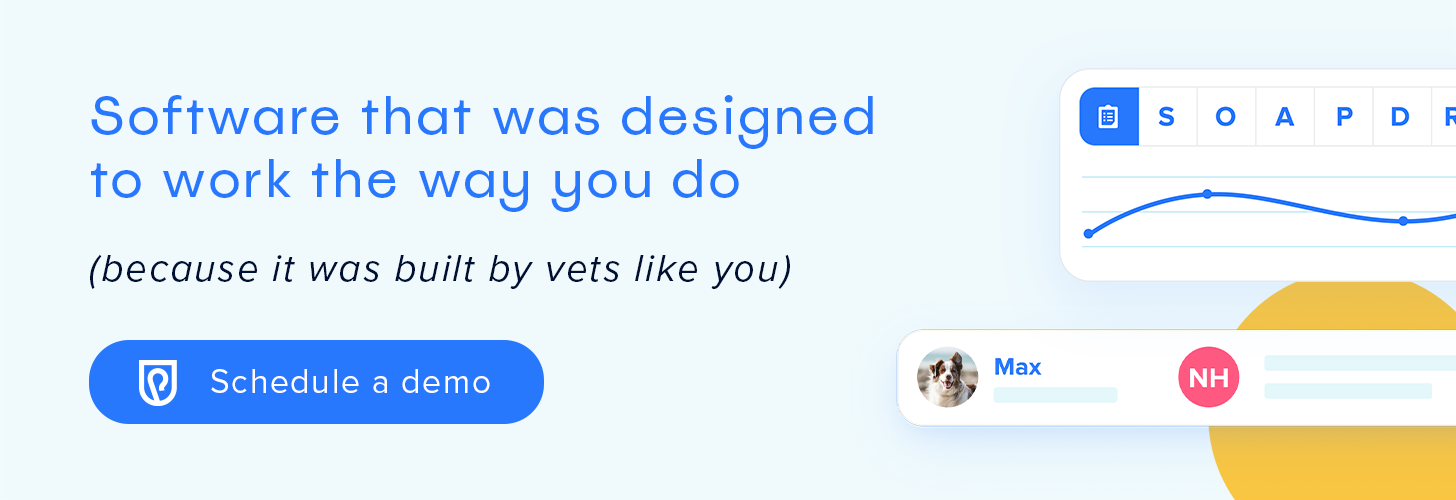Scheduling That Sticks: Employee Scheduling Tips and Tricks for Veterinary Practices

Efficient team scheduling often seems elusive. You think you’ve finally achieved your goal when an unexpected staff departure, personal emergency, or time-off request throws the entire system out of balance and leaves you and your team scrambling.
Employee scheduling software and a collaborative effort can alleviate schedule-related headaches, increase job satisfaction, and ensure your practice is well-staffed and ready for anything.
Understand your practice’s scheduling needs
You can start by reviewing your practice’s weekly schedule and performance reports to determine the most efficient and economical staffing arrangement. Determine how many veterinarians work each day and your current veterinarian-to-technician ratio. Then, identify appointment or surgery days where you may need more or fewer staff members to maintain an efficient workflow. You can use split shifts or part-time employees to provide additional coverage for busy times.
Next, compare your practice reports and budget with your payroll to determine how you can use your current team most effectively and affordably. Keep reading to learn how.
Consider your employee’s needs
Strategic scheduling is not only necessary to operate a business efficiently but is also essential for building team morale. Schedule flexibility improves employee job satisfaction, helps prevent burnout, and reduces turnover. Acknowledging your team’s scheduling needs demonstrates your respect for their lives outside work and shows your compassion and concern for each individual. Although maintaining a well-staffed practice is essential, you should always try to accommodate your team’s needs and preferences, within reason (e.g., letting them choose morning or evening shifts or eight- versus 10-hour days).
Encourage employees to directly discuss schedule-related concerns and suggestions with you rather than voicing their frustration to colleagues or solving the matter themselves (e.g., calling in sick). Being proactive will help employees feel valued and appreciated, and they likely will be more open to a compromise that suits the practice and their own needs.
Build a stronger team by maximizing employee skill sets
After determining how many staff members you need in a specific area or at a given time, consider each team member’s skills, strengths, and experience level. You should ensure that you have all hands on deck during busy times and that your strongest team members are positioned in critical areas (e.g., surgery, dentistry). It’s also important to pair less-experienced team members with veteran employees so newer employees receive adequate training.
Although this isn’t always possible or practical, you should also consider team dynamics such as personality and leadership style. Assign asynchronous schedules to team members with conflicting—or overly similar—personalities to avoid damaging productivity or workplace morale.
Establish a clear protocol for requesting schedule changes
Ensure your practice has a clear policy and procedure for schedule change requests. Unfortunately, in many veterinary hospitals, this means a slew of paper forms that often get buried or overlooked. Staff scheduling software can provide veterinary managers with an online communication hub for shift change and time-off requests. Veterinary scheduling software allows you to track, review, and approve requests with a few clicks and will automatically sync the changes with your practice’s staff schedule.
Many scheduling platforms include an option that flags an available shift so team members can initiate shift swapping. Team members can accept the shift or make a trade without requiring management approval.
Optimize scheduling with staff scheduling software
Employee scheduling software minimizes manual effort. You can combine your practice’s needs with your team’s preferences to create a fast, detailed, easily modifiable schedule. The software allows you to avoid staff scheduling headaches with benefits that include:
- Saving time with templates — Premade employee schedule templates let you quickly assign available team members to necessary shifts or tasks. Templates can be modified to your practice’s needs and saved for the future, or set a recurring schedule.
- Tracking paid time-off (PTO) — Veterinary scheduling software helps you avoid scheduling errors and work around vacations by notifying you when a team member is unavailable.
- Access from anywhere — Many scheduling software options are cloud-based for access via desktop or mobile devices. With remote management and viewing, you can adjust staff schedules on the fly and still ensure every team member has access to the latest changes.
Knowing how to make an employee schedule is an important skill for veterinary practice managers. Well-crafted and efficient schedules ensure your practice is appropriately staffed and that your staff feels motivated, cared for, and valued.
At Shepherd Veterinary Software, we believe veterinary professionals deserve joy—that’s why our practice management software is designed with your workflow in mind. Our powerful automations, intuitive one-click functions, and thoughtful integrations provide technology that lets you get back to the work you love—on your schedule, of course.
Contact us today to schedule a demo and discover how Shepherd Veterinary Software can help your practice.
